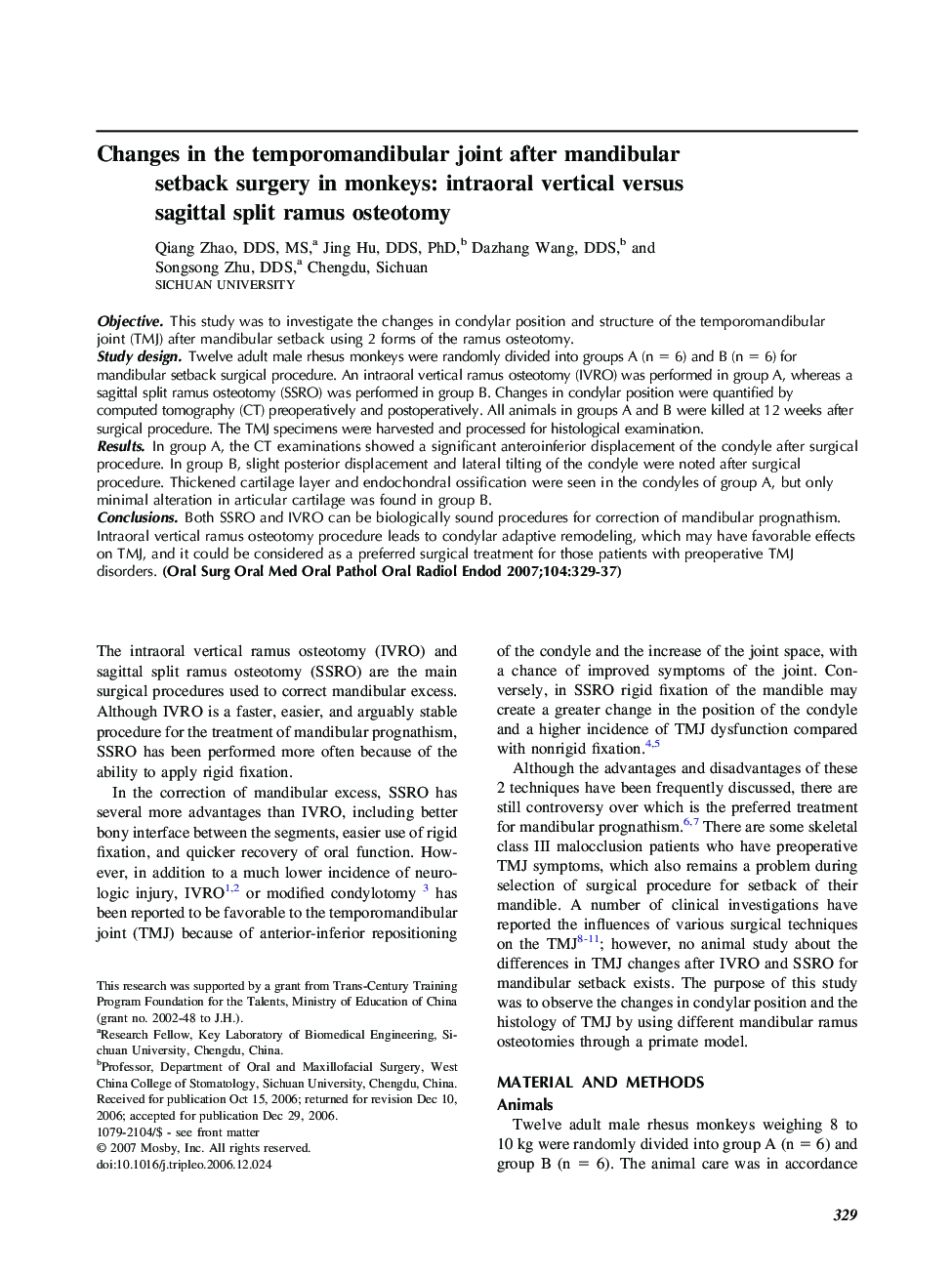| Article ID | Journal | Published Year | Pages | File Type |
|---|---|---|---|---|
| 3169239 | Oral Surgery, Oral Medicine, Oral Pathology, Oral Radiology, and Endodontology | 2007 | 9 Pages |
ObjectiveThis study was to investigate the changes in condylar position and structure of the temporomandibular joint (TMJ) after mandibular setback using 2 forms of the ramus osteotomy.Study designTwelve adult male rhesus monkeys were randomly divided into groups A (n = 6) and B (n = 6) for mandibular setback surgical procedure. An intraoral vertical ramus osteotomy (IVRO) was performed in group A, whereas a sagittal split ramus osteotomy (SSRO) was performed in group B. Changes in condylar position were quantified by computed tomography (CT) preoperatively and postoperatively. All animals in groups A and B were killed at 12 weeks after surgical procedure. The TMJ specimens were harvested and processed for histological examination.ResultsIn group A, the CT examinations showed a significant anteroinferior displacement of the condyle after surgical procedure. In group B, slight posterior displacement and lateral tilting of the condyle were noted after surgical procedure. Thickened cartilage layer and endochondral ossification were seen in the condyles of group A, but only minimal alteration in articular cartilage was found in group B.ConclusionsBoth SSRO and IVRO can be biologically sound procedures for correction of mandibular prognathism. Intraoral vertical ramus osteotomy procedure leads to condylar adaptive remodeling, which may have favorable effects on TMJ, and it could be considered as a preferred surgical treatment for those patients with preoperative TMJ disorders.
